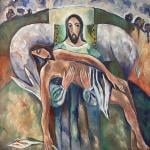The difference between the politics of the church and the real world of party politics is that in the church people are nice to each other in public and nasty to each other in private, whereas in real politics it’s often the other way round. But the church is so dysfunctional that it prefers the rhetoric of unity to its reality. Thus those debating female bishops in General Synod fell over backwards to couch their speeches in terms of generosity. But outside observers saw something very different – a snake pit of seething animosities. And outside observers were basically right.
The origins of this particular dysfunctionality stem from the fact the Church of England doesn’t have a proper appreciation of the unavoidability, and thus the necessity, of conflict – of what the political theorist Chantal Mouffe has called “agonistic pluralism”. Though the C of E was conceived in Henry VIII’s loins, it found its purpose in life following the English civil war as a project of national togetherness. The big idea was to make sure people would never again rip each other’s guts out in the name of religion. It was a worthy aim. And so a style of Christian religion was invented that emphasised common prayer and pastoral care over theology itself, with all its dangerous divisions. It was the dinner party rules version of Christianity where, in the name of some greater harmony, we all agree not to discuss politics or religious ideology. Its most cringeworthy product was the non-religious priest – like the priests of Jane Austen novels who are more interested in riding around the parish on their horse than talking about God. Such priests believed so little they were never going to be a danger to society.
Both Anglo-Catholics and Evangelicals reacted against such anodyne central churchmen, and understandably so, but nonetheless these non-religious priests fundamentally shaped the C of E and how the very idea of Englishness developed from the early 18th century onwards. We saw ourselves as the world’s natural compromisers. Unlike those of continental Europe, we prized ourselves on being uncomfortable with ideology and strong feelings. The big idea was the big tent. All are welcome as long as they leave behind passionate religious and political differences. That was the price of social togetherness. And that, indeed, was the value of established religion to the state.
Read the rest here











